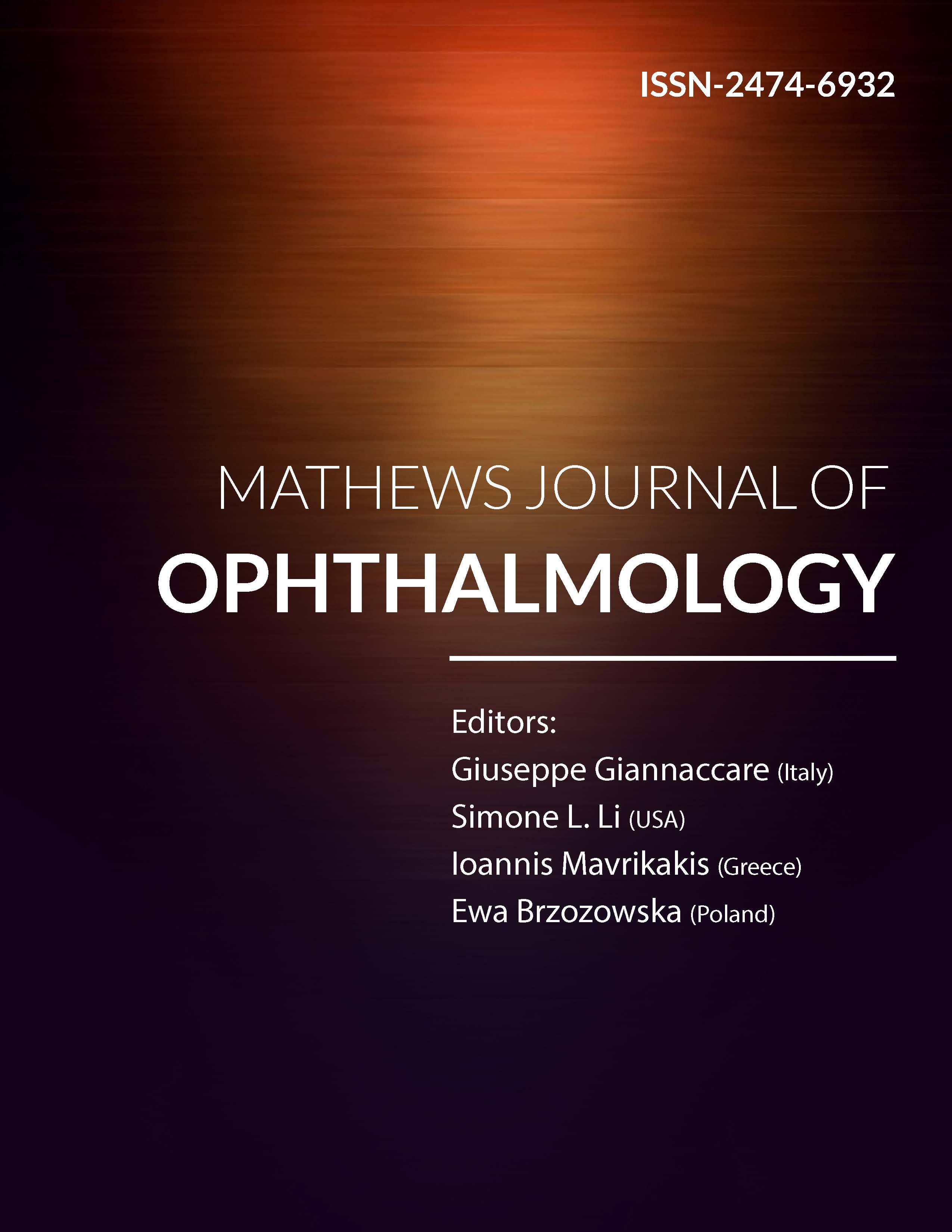
Information Links
Previous Issues Volume 2, Issue 1 - 2017
To Review the Treatment Response to Combined Intravenous Steroid and Orbital Irradiation in Asian Patients with Active Thyroid Eye Disease (TED)
Hsi-Wei Chung1, 2*,Lay Leng Seah1, 2,
1Singapore National Eye Centre, Singapore.
2Department of Ophthalmology, Yong Loo Lin School of Medicine, National University of Singapore, Singapore.
3Department of Clinical Sciences, Duke-NUS Graduate Medical School, Singapore.
Corresponding Author: Hsi-Wei Chung, Singapore National Eye Centre, 11 Third Hospital Avenue, Singapore, 168751, Tel: (65) 6322 8311; E-Mail: [email protected]
Received Date: 04 Jan 2017
Accepted Date: 09 Jan 2017
Published Date: 13 Jan 2017
Copyright © 2017 Chung HW
Citation: Chung HW and Seah LL. (2017). To Review the Treatment Response to Combined Intravenous Steroid and Orbital Irradiation in Asian Patients with Active Thyroid Eye Disease (TED). Mathews J Ophthalmol. 2(1): 011.
ABSTRACT
Aim: To review treatment response to combined intravenous steroid and orbital irradiation (DXT) in Asians with active thyroid eye disease (TED).
Design: Retrospective case series.
Methods: Single centre retrospective case series on active TED patients who received IV steroids and DXT at the Singapore National Eye Centre from 2005 to 2015. Patients who did / did not undergo surgical decompression were analysed for baseline difference in risk factors, time to receiving therapy, prior failed treatment and symptoms at presentation according.
Results: Sixteen patients (11 Males: 5 Females) were studied [mean ages 55.2 (Std dev 11.4, range 40-86) years]. 81 % (Thirteen patients) had active and severe TED (developed within a year of their thyroid dysfunction diagnosis). Seven patients (43.8%) had compressive optic neuropathy (CON) and eight patients (50%) had exposure keratopathy at presentation. Five patients (31.3%) had failed treatments prior to presentation.
The main indication for surgical decompression was CON and progressive active disease. Other indications included reduction of exophthalmos prior to strabismus surgery. Surgical decompression patients received IV steroids at 1.8 (+/- 2.0) months and DXT treatment 4.4 (+/- 4.1) months upon diagnosis of active disease. This is similar to the non-surgical group at 1.7 (+/- 1.5) and 5.3 (+/- 12.2) months respectively. However, the decompression patients needed >1 cycle of IV steroids (n=3) for disease stabilization, higher percentage of patients with risk factors at baseline (diabetes, hypertension, active smoking and failed prior treatments).
VISA inflammatory scores were significantly improved (p< 0.0005) in the non-surgical group post combination therapy. The surgical decompression group had stable scores post decompression. No significant deterioration in extraocular motility function (diplopia and ocular restriction) and visual acuity were seen in both groups.
Conclusion: Combined intravenous steroid therapy with DXT helps to reduce inflammation and maintain vision in our patients.The study also supports current literature of the early use of radiotherapy with intravenous steroids for active severe TED.
KEYWORDS
Thyroid Eye Disease; Radiotherapy; Intravenous Steroid Therapy; Compressive Optic Neuropathy.